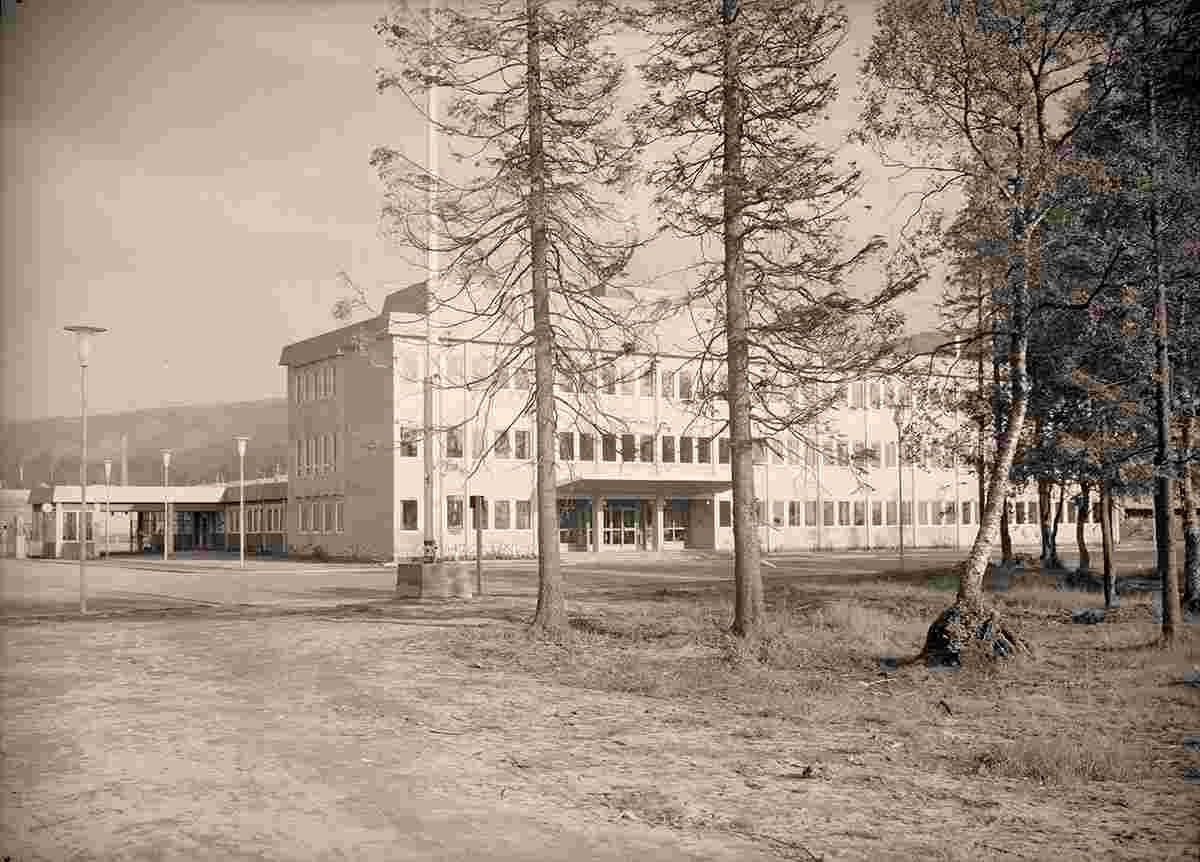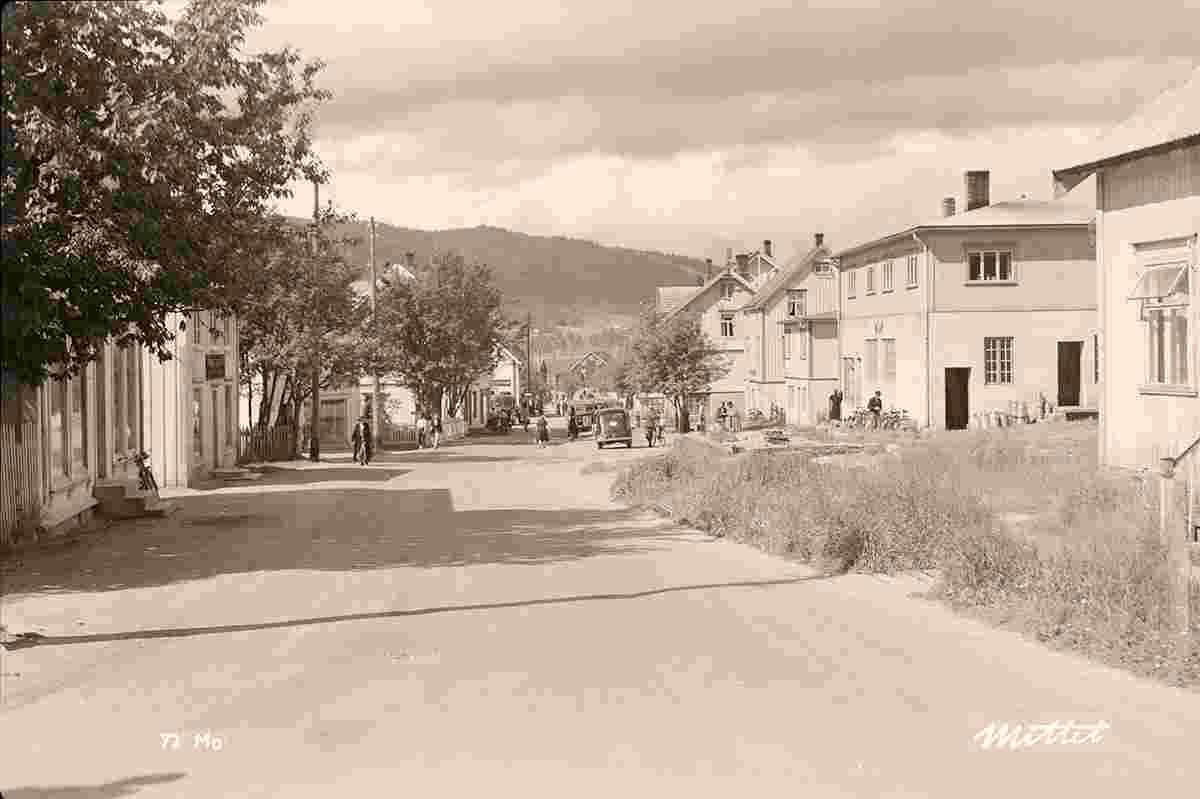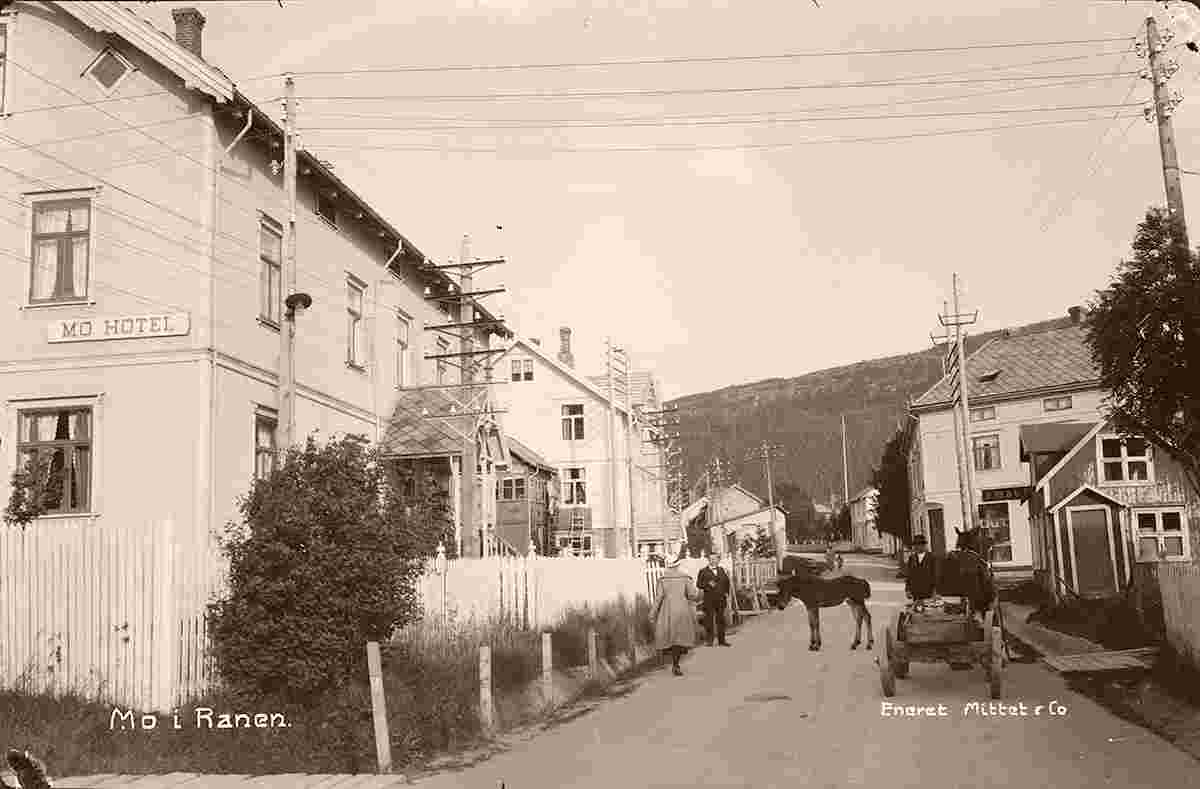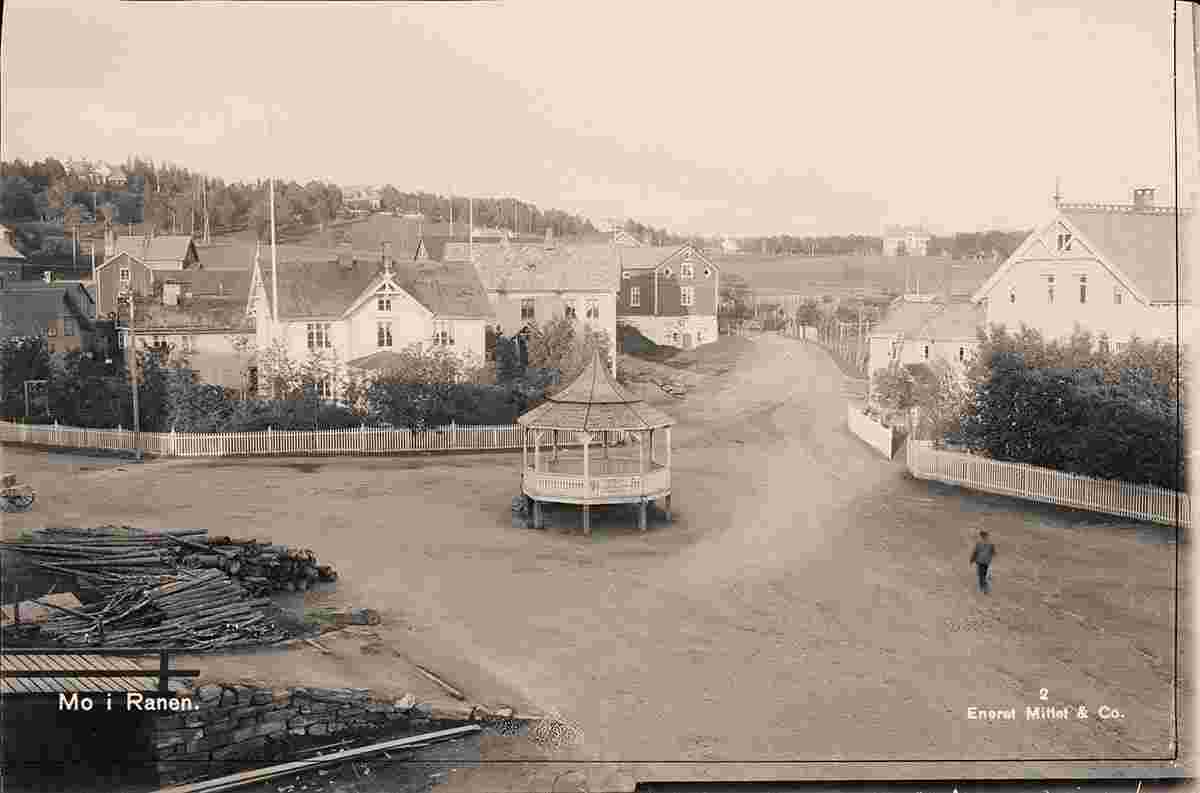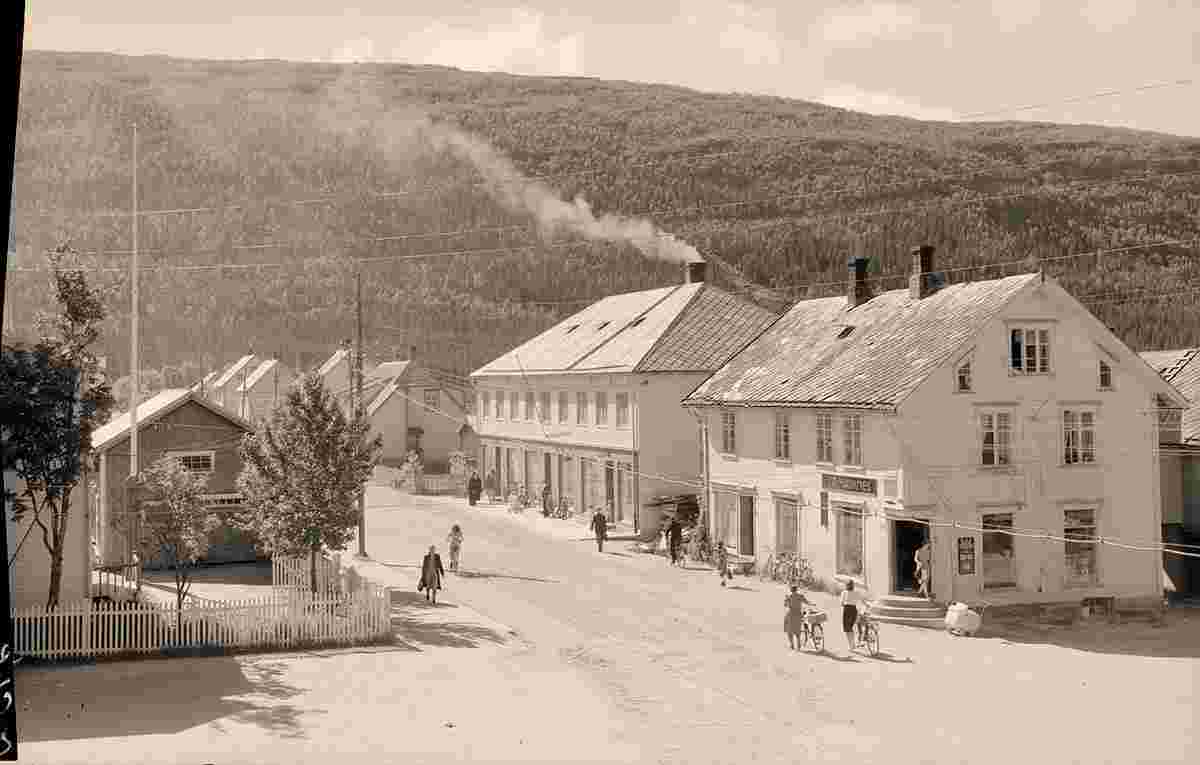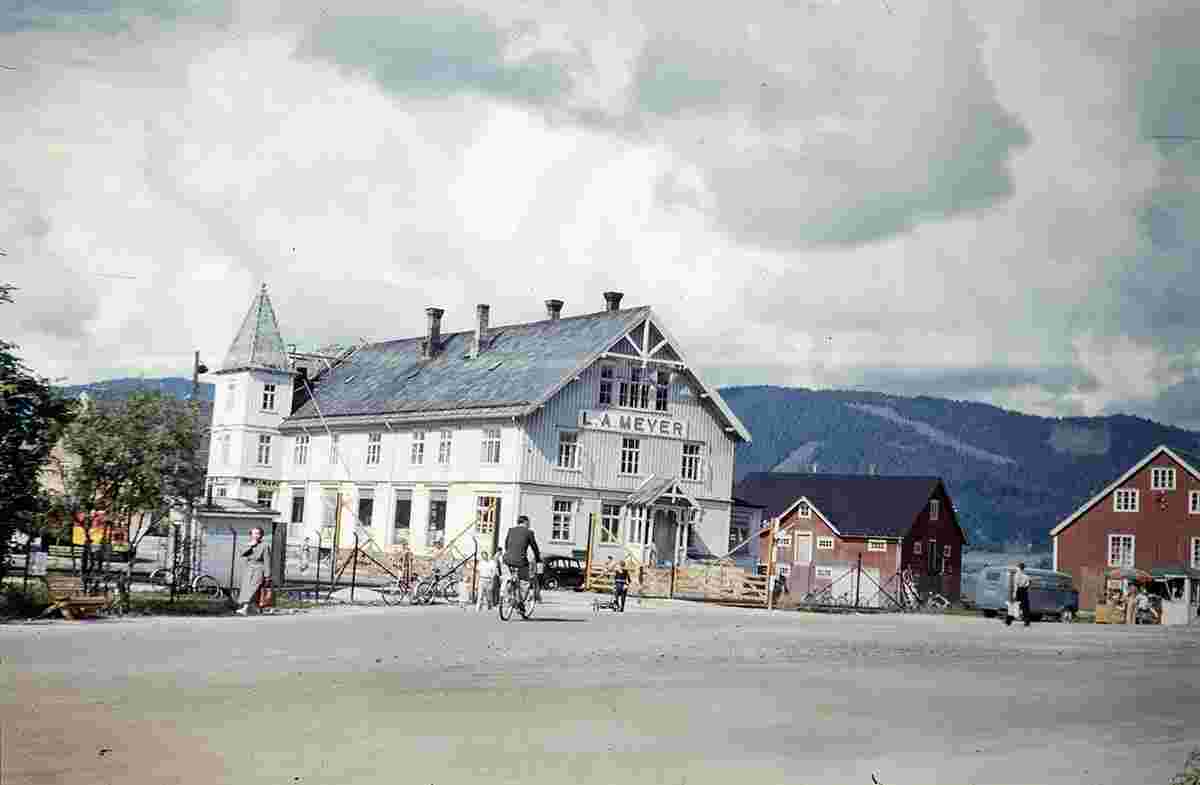Historical and old photos of Mo i Rana, Nordland
HistoryMining, building boats (Nordlands boats), and hunting/fishing used to be the main ways of life. Starting the summer 1730, there was a Sámi market in Mo. The market was held on the main church grounds until 1810. In 1860, wholesale merchant L.A. Meyer started a trade center, on license from the royal authority. Meyer traded flour, herring and tobacco, reindeer meat, skins and venison with the Swedes. The trade with Sweden increased, especially during Sweden's difficult economic years from 1892 to the start of the First World War. Many paths now used as hiking trails were originally trade paths for mountain dwellers in Sweden to Mo i Rana. One example is a path that starts in the Vindelfjällens Nature Reserve at Ammarnäs and follows the Vindel River valley then joins Vindelkroken and then crosses the Norwegian border to Mo i Rana. The municipality is rich on iron ores, and water to produce power. This was very important in industry development. Dunderland Iron Ore Company (1902–1947) established the first mines in Storforshei (27 kilometres or 17 miles north of Mo i Rana). Rana Gruber was established in 1937, also a mining company. In 1946 the Norwegian Parliament approved plans for the construction of an Iron mill in Norway. The Parliament selected Mo i Rana. A/S Norwegian Iron Work Company was established. In 1955, the first steel was produced to Norway and other countries. The construction of the iron works took nine years. During this period the village of Mo i Rana was changed to an industrial city. People from all over the country moved to Mo i Rana in order to obtain work. The community needed homes for thousands of new residents. Construction of houses and residential blocks started immediately. It was also established electricity and water supply to the city. In 1930, the population was 1300 people, this increased to 7,000 in 1955. In 1978 The Iron Mill employed approximately 4,500 of the 25,000 town's inhabitants. The Norwegian Parliament resolved in June 1988 to phase out state ownership of the company. Today there are 119 industrial companies at the industrial estate (Mo Industrial Park). The companies have activity in the iron and steel industry, the engineering industry, the research and development service industry and the information technology industry. In total, the companies employ approximately 1900 people. From the end of the Second World War until the early 1990s, Mo i Rana, with the town's steel mill as its cornerstone, was dependent upon heavy industry. Following the decline of heavy industry, new service industries have now grown in the town. MunicipalityRana Municipality was established on 1 January 1838 under the old formannskapsdistrikt law. Shortly afterwards, in 1839, the municipality was divided into Nord-Ranen and Sør-Ranen. In 1844, Nord-Ranen was renamed Mo herred. On 1 January 1923, the village of Mo was designated as a ladested and so it was separated from the rest of the municipality to become a municipality of its own. The new town of Mo (population: 1,305) kept the name Mo and the rest of the old municipality became known as Nord-Rana (bringing back the old name for the area). During the 1960s, there were many municipal mergers across Norway due to the work of the Schei Committee. On 1 January 1964, the municipality of Nord-Rana (population: 11,636) was merged with the town of Mo i Rana (population: 9,616), the part of the municipality of Sør-Rana located north of the Ranfjorden (population: 697), and the Sjona area of Nesna Municipality (population: 543) to create the large, new Rana Municipality. The "Graveyard War" in 1951During the autumn of 1951, around "700 or 800" protesters showed up at the local graveyard as a result of a "nighttime mobilization" to oppose the government's attempt to remove Soviet corpses from graves. Some 93,000 Soviet POWs had been brought to Norway between 1941 and 1945 by the Germans to work on improvements to infrastructure in Norway. A 2013 article in Dagbladet says that "the protests were so powerful that Jens Chr. Hauge personally stopped the action". (Only at this locality, was the government's Operation Asphalt stopped by civilians. More than 8000 Soviet corpses were removed from other graveyards in North Norway, without the government having decided the location of a new graveyard for these corpses. The protests in Mo i Rana were not mentioned in national media during the Cold War.) Origin: en.wikipedia.org | ||||||||||||
 |
Historical and old photos of Mo i Rana, Nordland
Historiske og gamle bilder av Mo i Rana, Nordland |
| Main page • Countries of Europa • Cities of Norway |
| Robinson Rd, CB 13862 Nassau, NP, The Bahamas |
